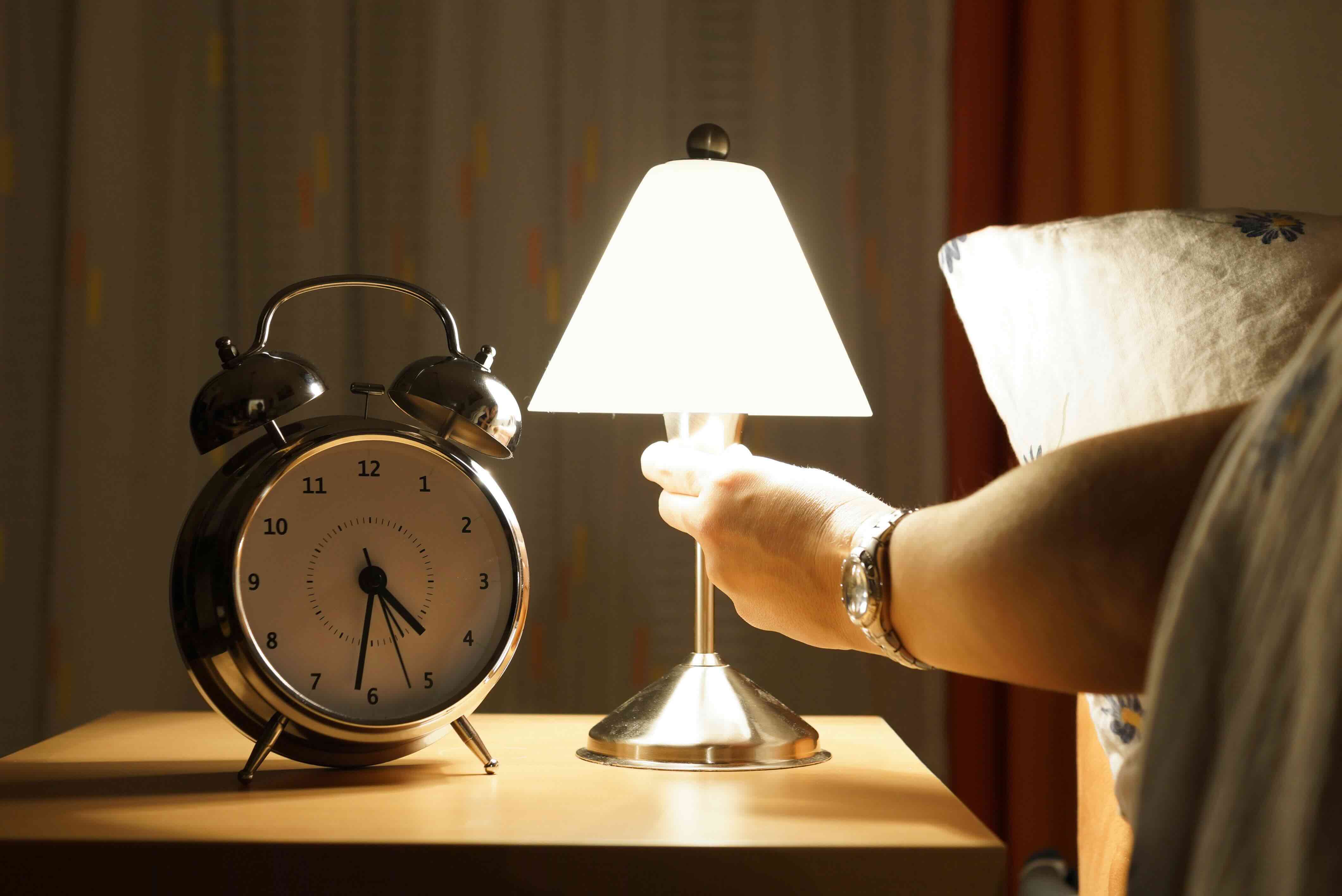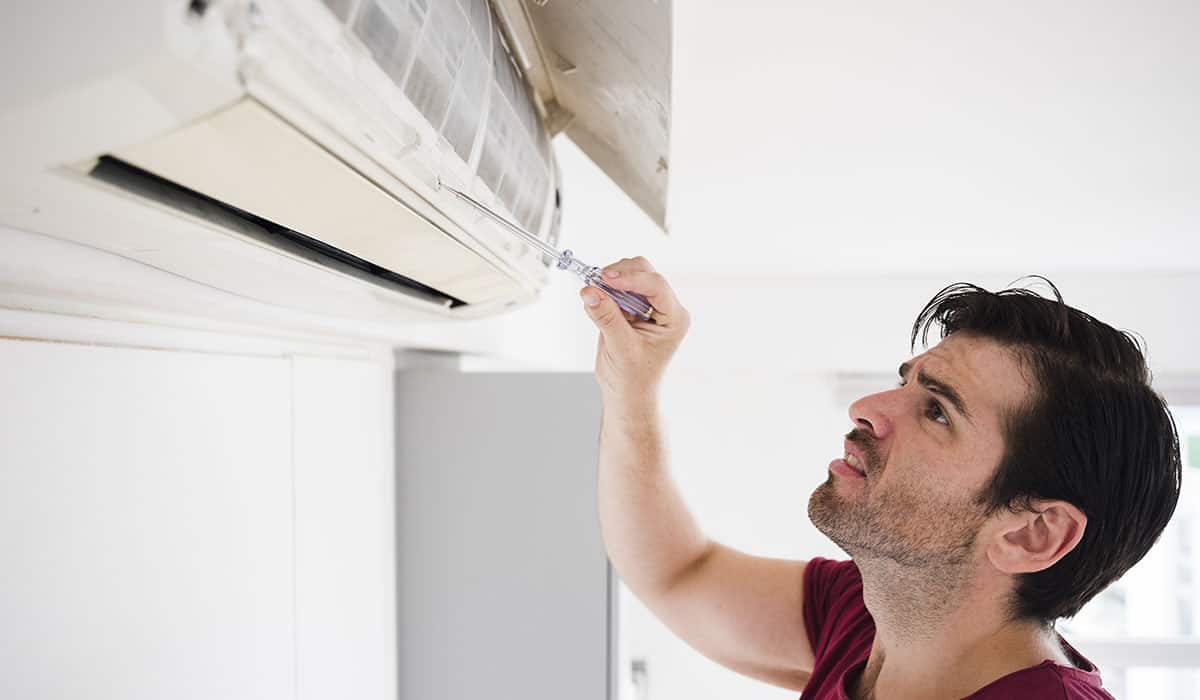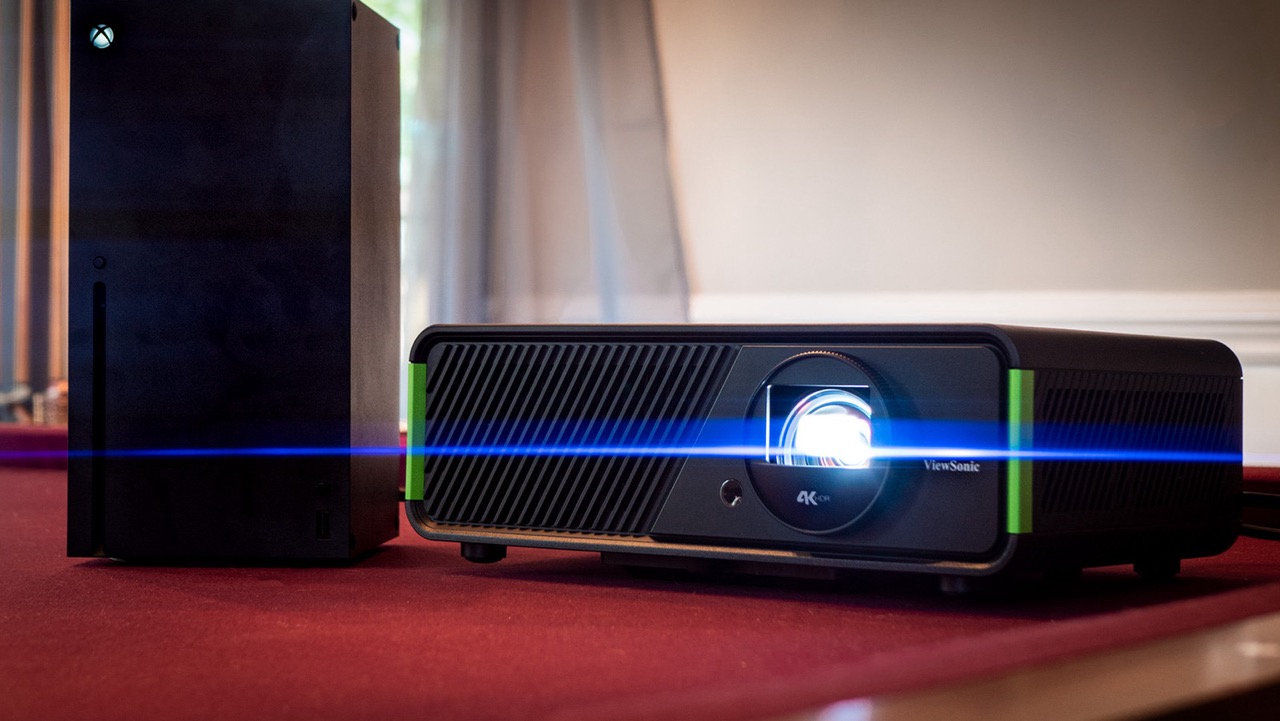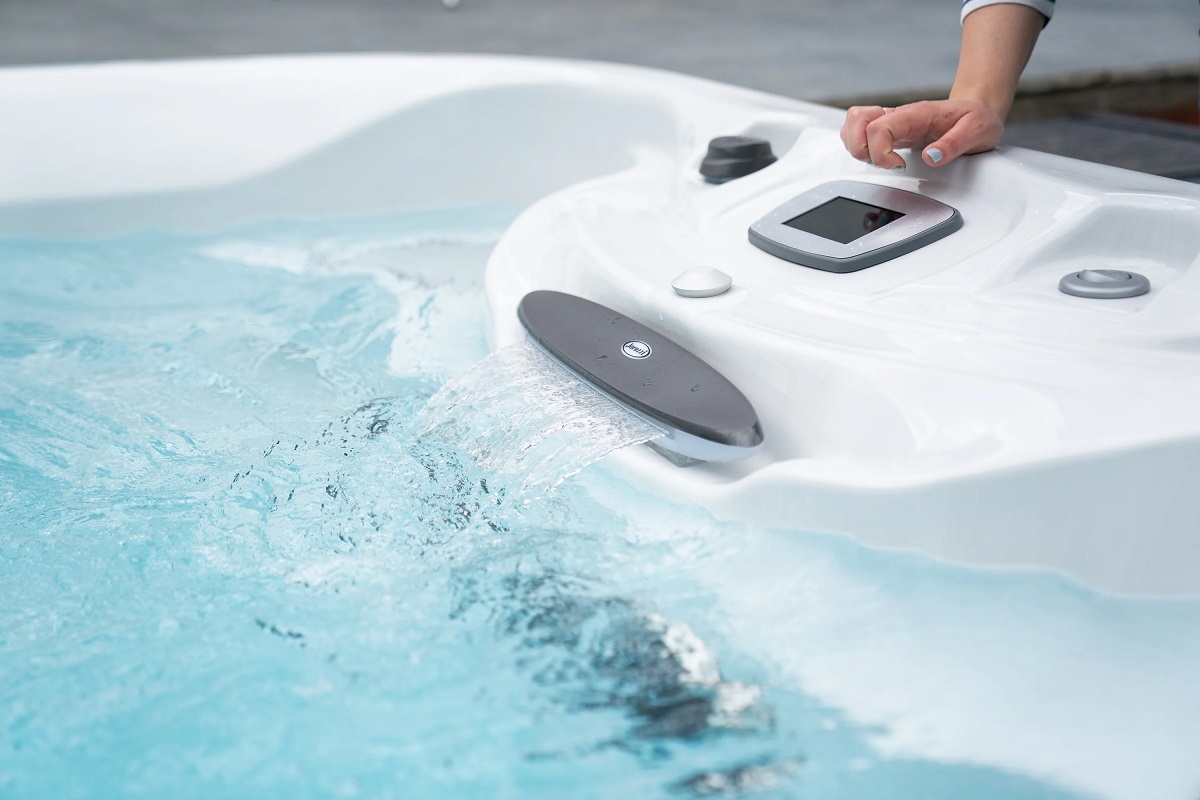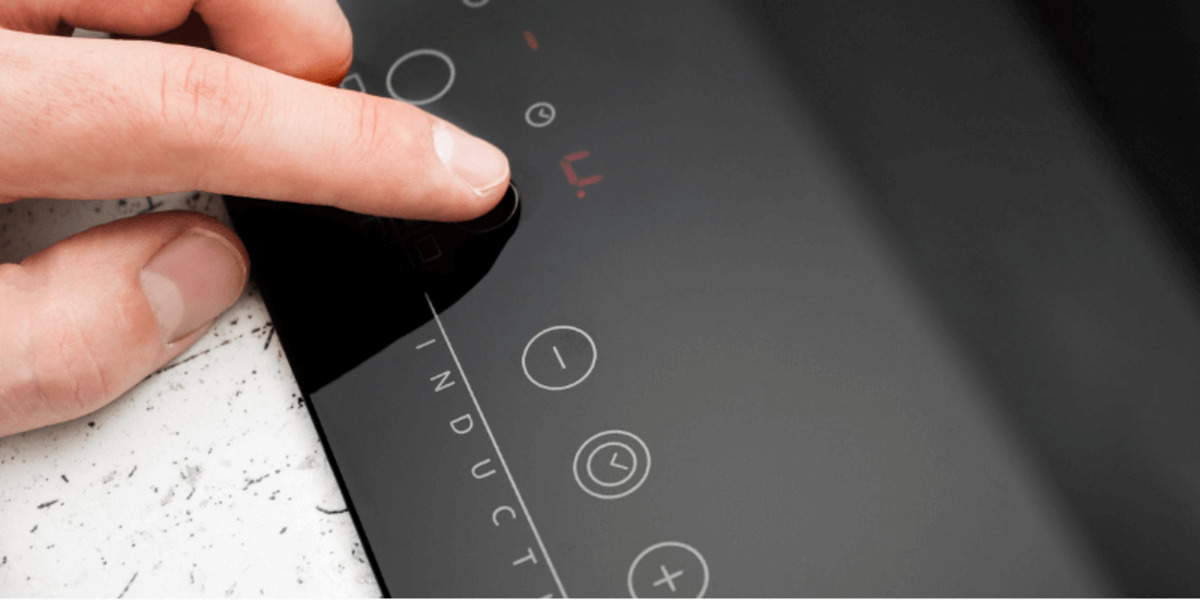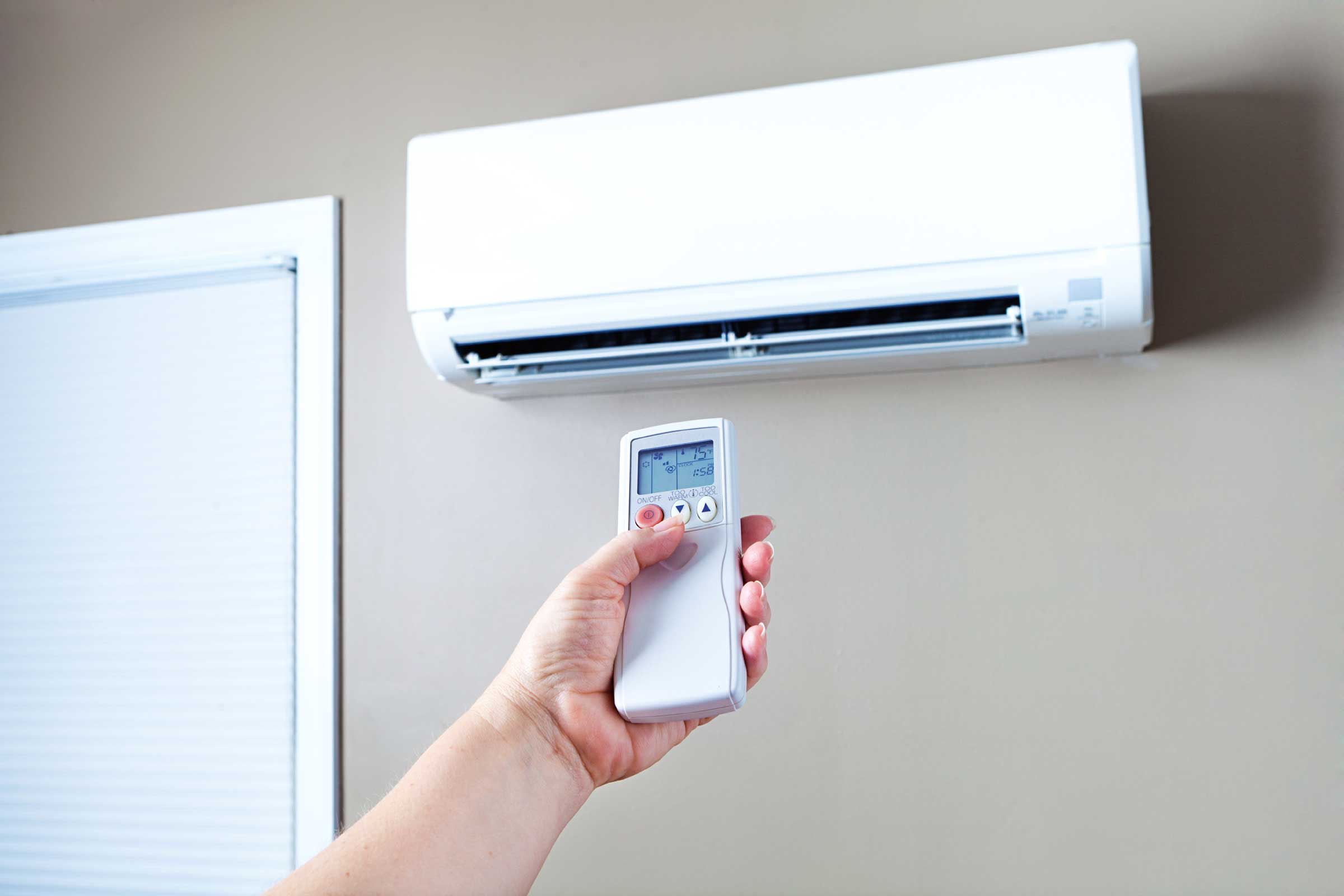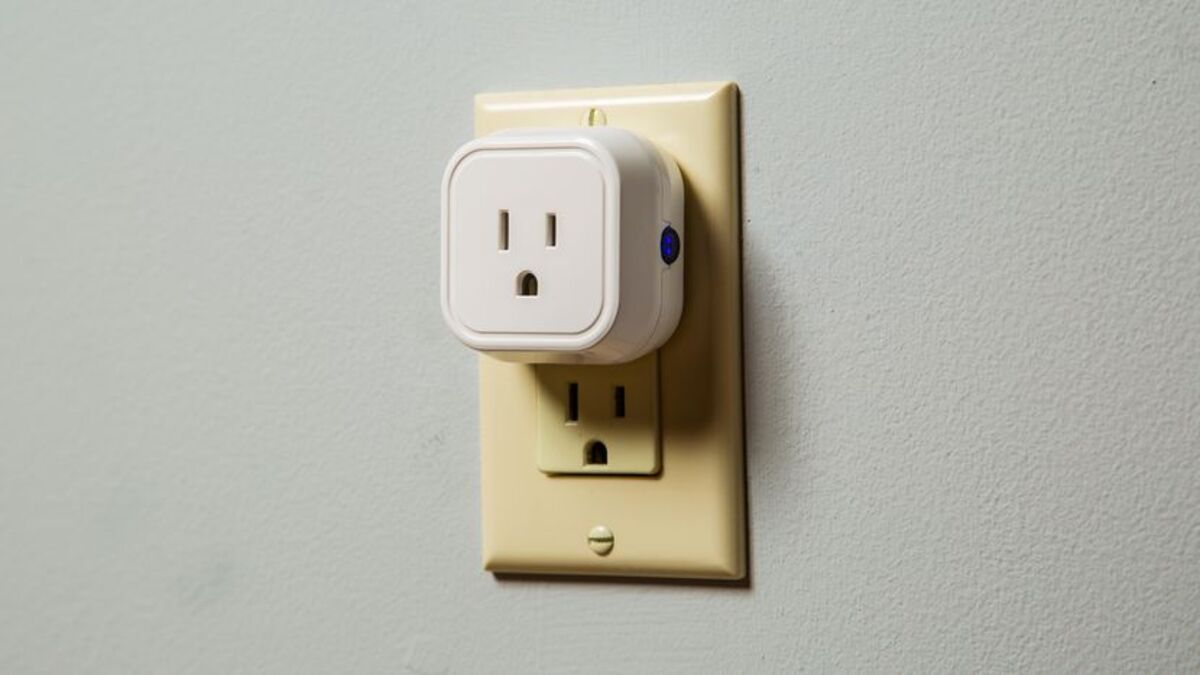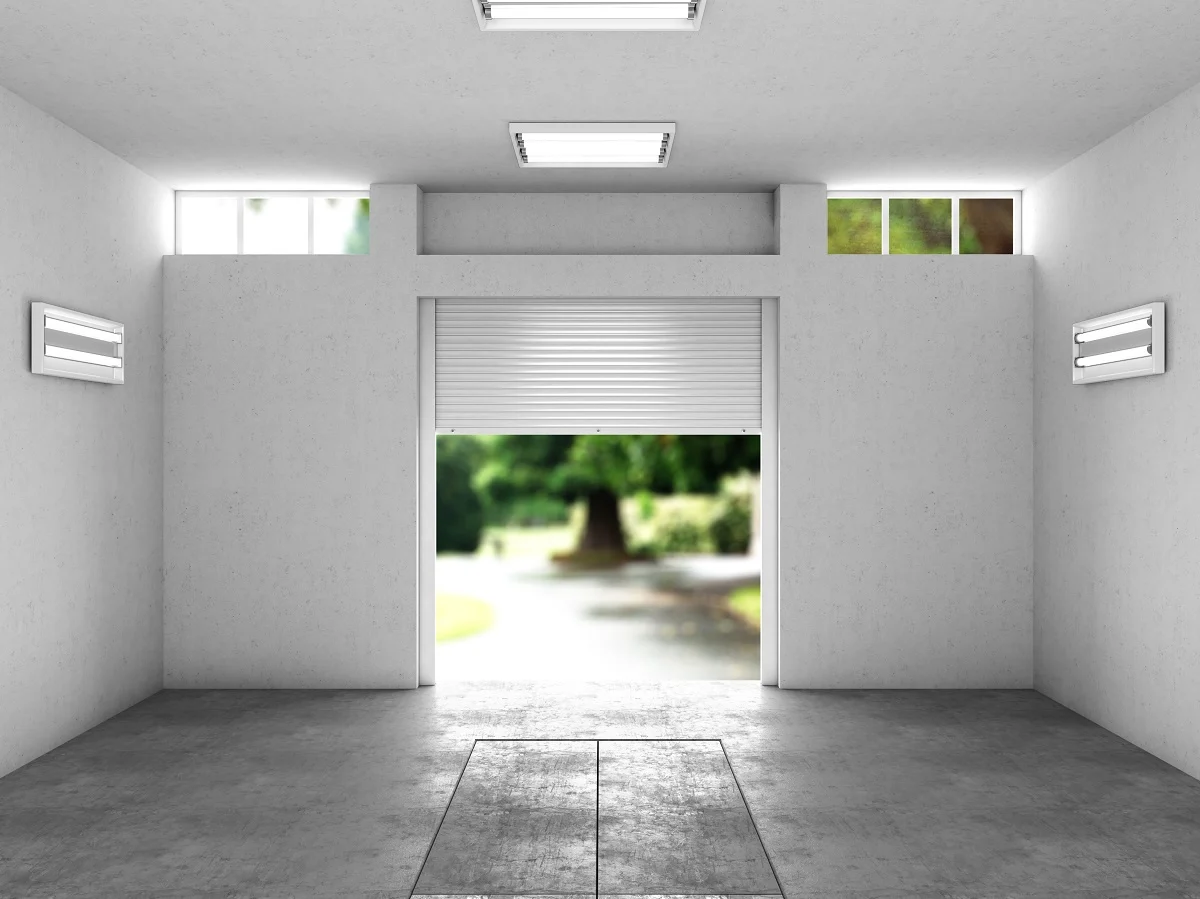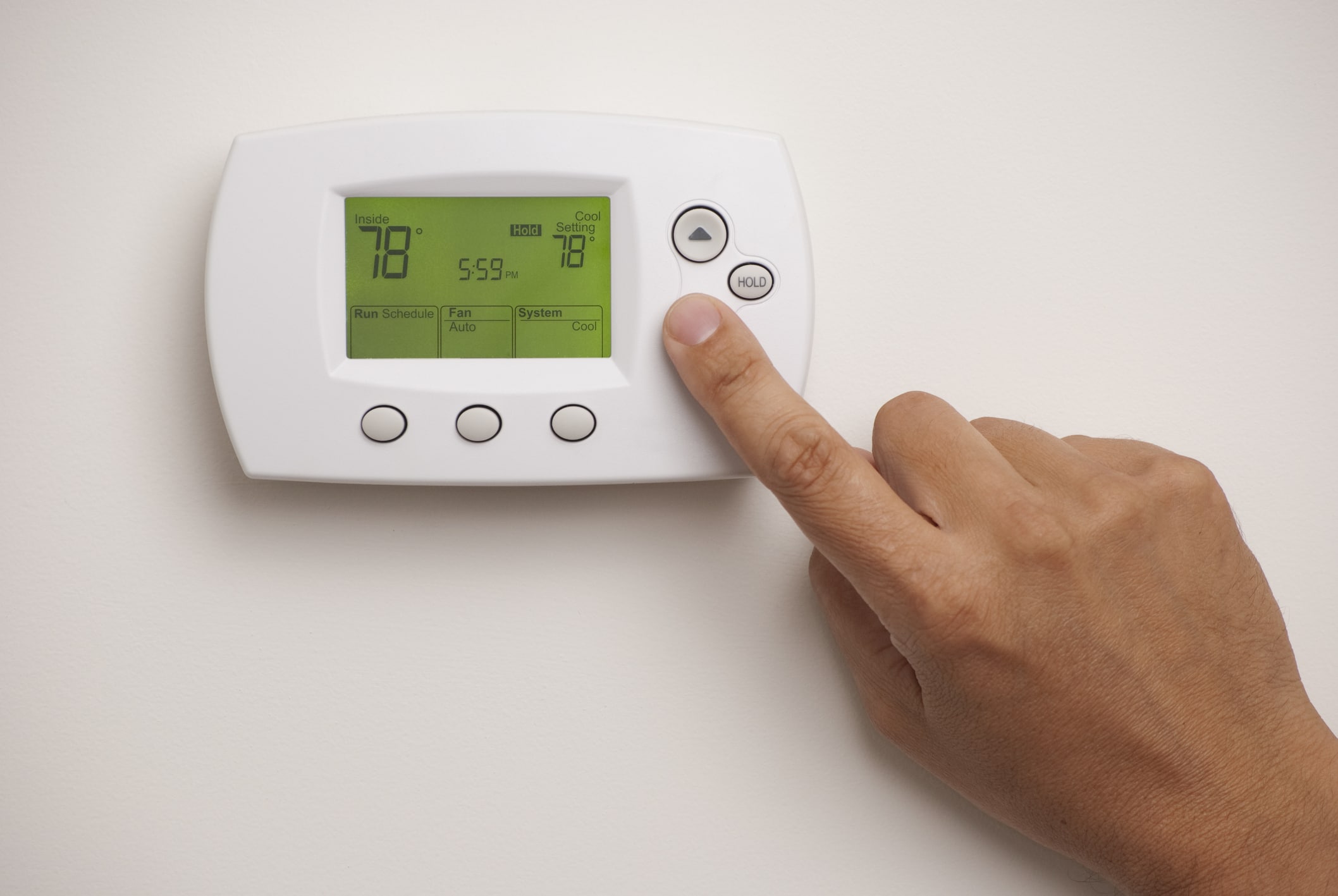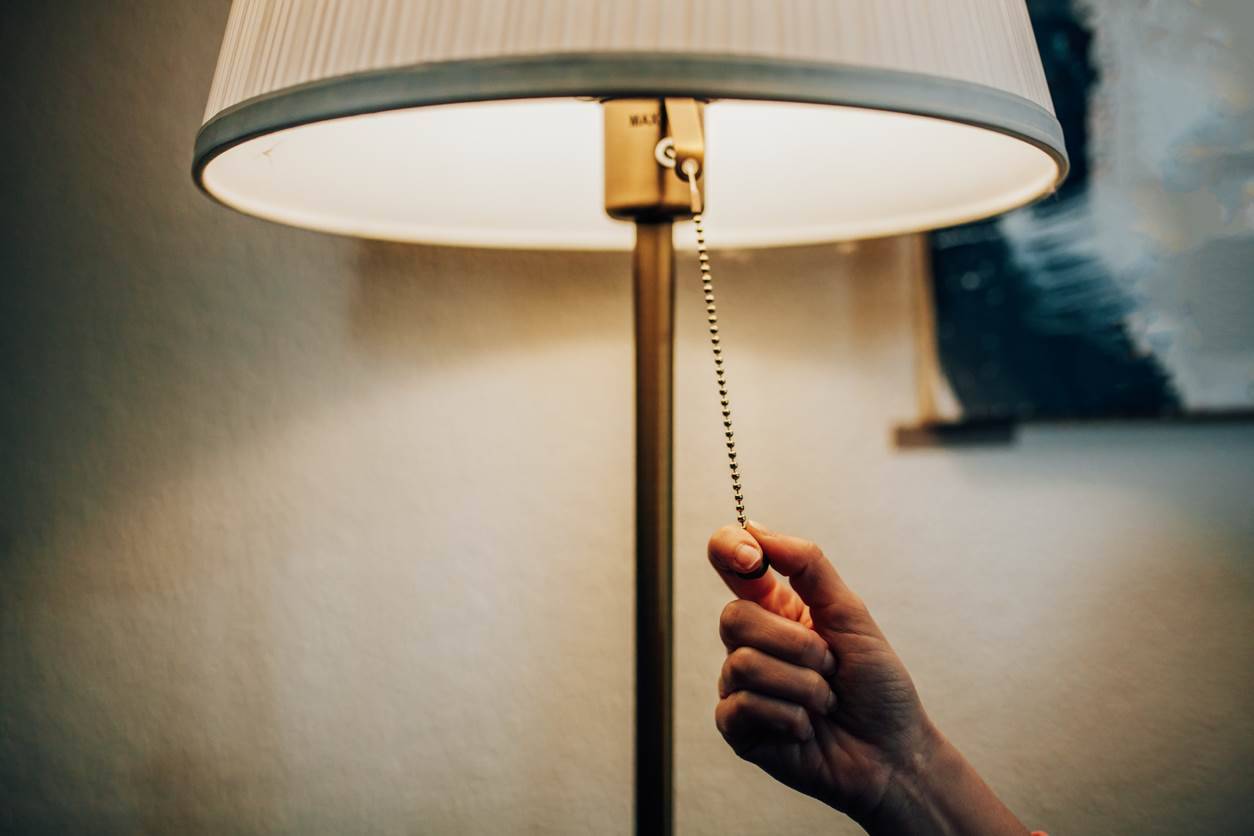

Furniture
Why Does My Lamp Turn On And Off By Itself
Modified: May 6, 2024
Discover the mysterious phenomenon of your furniture with our expert guide. Learn why your lamp turns on and off by itself and find solutions to this puzzling issue.
(Many of the links in this article redirect to a specific reviewed product. Your purchase of these products through affiliate links helps to generate commission for Storables.com, at no extra cost. Learn more)
Introduction
Have you ever experienced the puzzling phenomenon of your lamp turning on and off by itself? It can be quite unnerving and leave you scratching your head in confusion. While it may seem like a scene straight out of a horror movie, there are actually several logical explanations for this mysterious occurrence. In this article, we’ll explore the possible causes of why your lamp may be flickering on and off without any human intervention.
Before delving into the potential reasons, it’s important to understand that electrical issues should always be taken seriously. Faulty wiring or electrical malfunctions can pose a safety risk, so it’s crucial to address the problem promptly. However, not all instances of a lamp turning on and off by itself are indicative of a serious electrical problem. Sometimes, the issue can be easily resolved with a few simple troubleshooting steps.
So, let’s dive into the various factors that could be causing your lamp to flicker on and off unexpectedly. By understanding these potential causes, you’ll be better equipped to diagnose and resolve the issue.
Key Takeaways:
- Troubleshoot step-by-step to resolve your lamp’s erratic behavior, from checking wiring connections to adjusting timer settings. Prioritize safety and seek professional help if needed for a thorough diagnosis.
- Address potential causes such as loose wiring, faulty sockets, short circuits, and interference from other electronics to regain control over your lamp’s functionality. Prioritize safety and consider seeking professional assistance for complex issues.
Possible Causes of Lamp Turning On and Off by Itself
When your lamp starts acting like a mischievous entity, it’s essential to investigate the possible causes. Here are some common reasons why your lamp may be turning on and off by itself:
- Loose or Faulty Wiring: One of the most common culprits behind a lamp flickering on and off is loose or faulty wiring. Over time, wiring connections can become loose or worn out, causing intermittent electrical contact and resulting in the lamp’s erratic behavior.
- Faulty Lamp Socket: Another potential cause is a defective lamp socket. The socket is the component that holds the light bulb in place and provides electrical connections. If the lamp socket is damaged or worn out, it can cause erratic behavior, leading to the lamp turning on and off on its own.
- Short Circuits: When electrical wires come into contact with each other or with conductive materials, it can create a short circuit. This sudden surge of electricity can cause the lamp to flicker or turn off and on unexpectedly.
- Overloading the Circuit: If you have multiple appliances or devices connected to the same electrical circuit, it could lead to overloading. When the circuit is overwhelmed with electricity, it can result in voltage fluctuations, causing the lamp to flicker or toggle on and off.
- Interference from Other Electronics: Sometimes, nearby electronics can interfere with the lamp’s functionality. For instance, if you have a lamp plugged into the same power strip as a device that emits electromagnetic radiation, it can disrupt the electrical flow and cause the lamp to behave erratically.
- Malfunctioning Switch: A faulty switch can also be the culprit behind your lamp’s strange behavior. If the switch is defective, it may not make a proper electrical connection and can cause the lamp to turn on and off at random intervals.
- Timer or Motion Sensor Setting: If your lamp is equipped with a timer or motion sensor, incorrect settings or malfunctions in these components can cause the lamp to turn on and off unexpectedly. Check the settings and ensure they are properly configured.
- Ghost or Supernatural Phenomenon: While highly unlikely, some people attribute the flickering of lamps to supernatural or paranormal entities. These phenomena are often talked about in folklore and ghost stories.
Now that you have a better understanding of the potential causes behind your lamp’s unsolicited light show, let’s explore the steps you can take to troubleshoot and resolve the issue.
Loose or Faulty Wiring
Loose or faulty wiring is a common culprit behind a lamp turning on and off by itself. Over time, the electrical connections within your lamp can become loose or worn out, causing intermittent contact and resulting in the erratic behavior.
To check if loose wiring is causing the issue, follow these steps:
- 1. Unplug the Lamp: Before inspecting the wiring, always unplug the lamp from the power source to ensure your safety.
- 2. Remove the Lamp Shade and Bulb: Carefully remove the lampshade and unscrew the light bulb from the lamp socket. This will give you clear access to the wiring inside.
- 3. Inspect the Wiring Connections: Take a close look at the wiring connections within the lamp. Look for any loose, frayed, or damaged wires. Make sure that all the wires are properly connected and securely in place.
- 4. Tighten Loose Connections: If you notice any loose connections, use a screwdriver or pliers to tighten them. Ensure that the connections are snug but not over-tightened, as this can cause further damage.
- 5. Replace Faulty Wiring: If you find any wires that are frayed, damaged, or beyond repair, it’s best to replace them. You can purchase new wiring from a hardware store or seek professional help.
- 6. Reassemble the Lamp: Once you’ve addressed any loose connections or replaced faulty wiring, carefully reassemble the lamp by screwing in the light bulb and putting the lampshade back in place.
- 7. Test the Lamp: Plug the lamp back into the power source and turn it on to see if the issue has been resolved. If the lamp no longer turns on and off without your command, then congratulations, you’ve successfully dealt with the loose or faulty wiring!
It’s worth noting that dealing with electrical wiring can be dangerous if you’re not comfortable or experienced with handling it. If you’re unsure or uncomfortable with the process, it’s always best to consult a licensed electrician for assistance.
Now that you’ve addressed the loose or faulty wiring possibility, let’s move on to the next potential cause – a faulty lamp socket.
Faulty Lamp Socket
If your lamp continues to turn on and off by itself even after addressing loose or faulty wiring, the next possible culprit could be a defective lamp socket. The lamp socket is the component that holds the light bulb in place and provides the necessary electrical connections.
To determine if a faulty lamp socket is causing the issue, follow these steps:
- 1. Unplug the Lamp: Before inspecting the lamp socket, always unplug the lamp from the power source to ensure your safety.
- 2. Remove the Lamp Shade and Bulb: Carefully remove the lampshade and unscrew the light bulb from the lamp socket. This will provide clear access to the socket for further inspection.
- 3. Inspect the Lamp Socket: Take a close look at the lamp socket for any signs of damage or wear. Look for any visible cracks, scorch marks, or metal corrosion.
- 4. Test the Socket with a Different Bulb: Sometimes, a faulty lamp socket can cause the bulb to flicker or turn on and off. To rule out the possibility of a defective bulb, try using a different bulb in the same socket and see if the issue persists.
- 5. Replace the Lamp Socket: If you notice any visible damage or if the lamp continues to flicker with a different bulb, it’s likely that the socket needs to be replaced. Lamp sockets are widely available at hardware stores or online, and you can consult the lamp’s manufacturer for specific replacement parts.
- 6. Reassemble the Lamp: Once you’ve replaced the faulty lamp socket, carefully reassemble the lamp by screwing in the new socket and placing the lampshade back on.
- 7. Test the Lamp: Plug the lamp back into the power source and turn it on to see if the issue has been resolved. If the lamp no longer turns on and off without your command, then you’ve successfully addressed the faulty lamp socket.
If you’re unsure about replacing the lamp socket or if the issue persists even after replacing it, it’s recommended to seek the assistance of a professional electrician. They have the expertise to diagnose and resolve more complex electrical issues.
With the possibility of a faulty lamp socket ruled out, let’s move on to the next potential cause – short circuits.
Short Circuits
Short circuits can be another cause for your lamp turning on and off spontaneously. A short circuit occurs when two electrical wires come into direct contact, bypassing the intended circuitry. This sudden surge of electricity can cause the lamp to flicker or toggle on and off unexpectedly.
To check for and address a short circuit, follow these steps:
- 1. Unplug the Lamp: Before inspecting for short circuits, make sure to unplug the lamp from the power source to avoid any electrical hazards.
- 2. Remove the Lamp Shade and Bulb: Carefully remove the lampshade and unscrew the light bulb from the lamp socket to access the internal components.
- 3. Inspect the Wiring: Examine the lamp’s wiring for any signs of damage, such as exposed wires, melted insulation, or blackened areas. Pay close attention to areas where the wires may have come into contact with each other or with other metal objects.
- 4. Separate the Wires: If you notice any wires that are touching or appear to be making contact, gently separate them using non-conductive tools like plastic tweezers or a small wooden stick.
- 5. Wrap Exposed Wires: If you find any exposed wires or areas where the insulation is damaged, carefully wrap them with electrical tape to insulate and prevent further contact.
- 6. Reassemble the Lamp: Once you’ve inspected and resolved any potential short circuits, reassemble the lamp by screwing in the light bulb and placing the lampshade back on.
- 7. Test the Lamp: Plug the lamp back into the power source and switch it on to see if the issue has been resolved. If the lamp no longer flickers or turns on and off by itself, then you’ve successfully addressed the short circuit.
It’s important to note that short circuits can be hazardous and may cause electrical fires. If you’re unsure about dealing with a short circuit or if the issue persists even after your troubleshooting attempts, it’s strongly recommended to seek professional assistance from a licensed electrician.
Now that we’ve covered short circuits, let’s explore the possibility of overloading the circuit as a potential cause for your lamp’s erratic behavior.
Read more: Why Does My Ceiling Fan Turn On By Itself
Overloading the Circuit
If your lamp is turning on and off unexpectedly, it’s essential to consider whether you may be overloading the circuit. Overloading occurs when you have multiple appliances or devices connected to the same electrical circuit, exceeding its capacity to handle the electrical load.
To determine if an overloaded circuit is causing the issue, follow these steps:
- 1. Assess the Electrical Load: Take a look at all the devices and appliances connected to the same circuit as your lamp. Consider the wattage and power requirements of each device.
- 2. Calculate the Load: Add up the wattage or power consumption of all the devices connected to the circuit. Ensure that the total load does not exceed the circuit’s capacity. Most circuits in residential settings have a typical capacity of 15 or 20 amps.
- 3. Unplug or Disconnect Unnecessary Devices: If the total load exceeds the circuit’s capacity, try unplugging or disconnecting some devices. Prioritize essential appliances and distribute them across multiple circuits if possible.
- 4. Balance the Electrical Load: If you have several high-power devices on the same circuit, consider redistributing them to different circuits. This helps ensure a balanced electrical load and can prevent circuit overloads.
- 5. Test the Lamp: Once you’ve optimized the electrical load, plug the lamp back into the power source and switch it on to see if the issue has been resolved. If the lamp no longer turns on and off unexpectedly, you’ve successfully dealt with circuit overloading.
If you find that overloading the circuit is a recurring issue, you may need to consider upgrading your electrical system or consulting with a qualified electrician. They can assess your home’s electrical setup and suggest appropriate solutions to prevent overloading and ensure safety.
With the topic of circuit overloading covered, let’s move on to the potential interference from other electronics as a cause for your lamp’s erratic behavior.
Interference from Other Electronics
It’s not uncommon for other electronics to interfere with the functionality of your lamp, causing it to turn on and off unexpectedly. Electronics such as televisions, computers, sound systems, or even appliances can emit electromagnetic radiation that disrupts the electrical flow within your lamp.
To address the issue of interference from other electronics, consider the following steps:
- 1. Identify Interference Sources: Take note of any nearby electronics that could potentially be causing the interference. Look for devices that are in close proximity to the lamp or share the same power source.
- 2. Relocate Electronics: Try moving the lamp to a different location away from other electronics. This can help minimize the electromagnetic interference and reduce the chances of the lamp turning on and off unexpectedly.
- 3. Use Separate Electrical Outlets: Plug your lamp into a different electrical outlet or power strip than the one used by other electronics. By separating the power sources, you can minimize the risk of interference.
- 4. Utilize Power Filters or Surge Protectors: Consider using power filters or surge protectors to regulate the electrical flow and protect your lamp from electrical disturbances caused by other electronics.
- 5. Test the Lamp: Once you’ve made the necessary adjustments, plug the lamp back into the power source and switch it on to see if the issue has been resolved. If the lamp no longer turns on and off by itself, you’ve successfully mitigated the interference from other electronics.
If the interference issue persists or if the lamp continues to exhibit erratic behavior, it’s advisable to consult with an electrician or an expert in electronic devices. They can provide further guidance and assistance in identifying and resolving the interference problem.
Now that we’ve addressed the potential interference from other electronics, let’s explore the possibility of a malfunctioning switch contributing to your lamp’s behavior.
Malfunctioning Switch
A malfunctioning switch can be another potential cause for your lamp turning on and off by itself. If the switch is defective or worn out, it may not make a proper electrical connection, leading to erratic behavior.
To troubleshoot and address a malfunctioning switch, follow these steps:
- 1. Unplug the Lamp: Before inspecting the switch, always unplug the lamp from the power source to ensure your safety.
- 2. Remove the Lamp Shade and Bulb: Carefully remove the lampshade and unscrew the light bulb from the lamp socket. This will provide clear access to the switch for further inspection.
- 3. Test the Switch: Toggle the switch on and off several times to observe its functionality. Pay attention to any sticking, loose, or sluggish movements. If the switch feels loose or does not function smoothly, it may be the cause of the problem.
- 4. Clean or Replace the Switch: If the switch is dirty or corroded, you can try cleaning it with a cotton swab and some electrical contact cleaner. If the switch continues to malfunction even after cleaning, it may be necessary to replace it. Consult the lamp’s manufacturer or a hardware store for a suitable replacement switch.
- 5. Reassemble the Lamp: Once you’ve cleaned or replaced the switch, carefully reassemble the lamp by screwing in the light bulb and placing the lampshade back on.
- 6. Test the Lamp: Plug the lamp back into the power source and switch it on to see if the issue has been resolved. If the lamp no longer turns on and off unexpectedly, you’ve successfully addressed the malfunctioning switch.
If you’re unsure about handling the switch replacement or if the issue persists even after your troubleshooting attempts, it’s recommended to seek professional assistance from a licensed electrician. They can diagnose and resolve any complex electrical issues and ensure your safety.
With the potential of a malfunctioning switch covered, let’s move on to the possibility of timer settings or motion sensors causing your lamp’s erratic behavior.
Timer or Motion Sensor Setting
If your lamp has a built-in timer or motion sensor, incorrect settings or malfunctions in these components can cause it to turn on and off unexpectedly. Timer settings or motion sensor sensitivity issues can lead to erratic behavior, giving the illusion that the lamp is operating on its own.
To troubleshoot and address timer or motion sensor-related issues, follow these steps:
- 1. Understand the Timer or Motion Sensor Setup: Familiarize yourself with the lamp’s user manual or instructions to understand how the timer or motion sensor functions and how it should be properly set up.
- 2. Check Timer or Motion Sensor Settings: Verify that the timer or motion sensor settings are configured correctly. Double-check the timers, delay intervals, or sensitivity levels to ensure they match your desired preferences.
- 3. Adjust the Timer or Motion Sensor: If the lamp’s behavior is not aligned with your desired settings, try adjusting the timer or motion sensor controls accordingly. Test different settings to see if it resolves the issue of the lamp turning on and off unexpectedly.
- 4. Reset the Timer or Motion Sensor: If adjusting the settings doesn’t work, consider resetting the timer or motion sensor to its default settings. Consult the lamp’s user manual for specific instructions on how to perform a reset.
- 5. Test the Lamp: After modifying the timer or motion sensor settings or performing a reset, plug the lamp back into the power source and observe its behavior. If the lamp now operates according to your specified settings and no longer turns on and off randomly, you’ve successfully resolved the timer or motion sensor issue.
If you’re having trouble understanding the lamp’s timer or motion sensor settings, consult the manufacturer’s customer support or visit their website for additional guidance. They can provide specific instructions or troubleshoot any technical issues you may encounter.
If the issue persists even after adjusting the settings or performing a reset, it’s a good idea to reach out to the manufacturer’s customer support or consult with a professional electrician for further assistance.
Now that we’ve covered the potential timer or motion sensor-related causes, let’s dive into a more unconventional possibility – the existence of a ghost or supernatural phenomenon!
Ghost or Supernatural Phenomenon?
While it may seem far-fetched, some individuals attribute the flickering of lamps to supernatural or paranormal entities. According to folklore and ghost stories, spirits or ghosts may interact with electrical devices, including lamps, as a way to communicate or manifest their presence.
It’s important to approach this possibility with a skeptical mindset, as there is no scientific evidence to support the existence of ghosts or supernatural phenomena. In most cases, there are rational explanations for lamp flickering, such as the ones discussed earlier in this article.
However, if you firmly believe that your lamp’s behavior is due to a paranormal encounter, there are a few steps you can take:
- 1. Rule Out Other Causes: Before attributing the flickering to a ghost or supernatural phenomenon, make sure to thoroughly investigate and address all the potential physical causes we’ve discussed in earlier sections of this article. This includes checking for loose wiring, faulty socket, short circuits, overloading, interference, and malfunctioning switches.
- 2. Gather Evidence: If you suspect paranormal activity, try to document the unusual lamp behavior and any other associated phenomena. Record videos or capture photos of the flickering lamp, capture any strange sounds or disturbances, and note down the frequency and patterns of the occurrences.
- 3. Seek Paranormal Experts: If you remain convinced that there is a supernatural element involved, you may consider reaching out to paranormal experts or investigators who specialize in studying and documenting such occurrences. They have the knowledge and experience to assess and investigate the situation further.
- 4. Maintain a Healthy Perspective: While exploring the paranormal can be intriguing, it’s essential to maintain a healthy perspective and approach the situation with critical thinking. Keep in mind that there are often logical explanations for seemingly inexplicable phenomena.
Remember that the existence of ghosts or supernatural phenomena is a matter of personal belief and interpretation. It’s always advisable to prioritize rational explanations and seek professional help when dealing with electrical issues or other potential causes.
With that said, it’s worth exploring all possibilities to find a suitable resolution for your lamp’s erratic behavior.
Now that we’ve covered the various possible causes of a lamp turning on and off by itself, it’s time to move on to the next section, where we will discuss steps to troubleshoot and resolve the issue.
Check the lamp’s wiring and connections for any loose or damaged parts. Also, make sure the lamp is not placed near any sources of interference, such as electronic devices or appliances.
Steps to Troubleshoot and Resolve the Issue
Dealing with a lamp that turns on and off by itself can be frustrating, but there are steps you can take to troubleshoot and resolve the issue. Follow these guidelines to identify and address the problem:
- 1. Check the Wiring Connections: Ensure that the lamp is unplugged from the power source, then inspect the wiring connections within the lamp. Look for any loose, frayed, or damaged wires. Tighten any loose connections or replace damaged wiring.
- 2. Inspect and Replace the Lamp Socket: Remove the lampshade and bulb to access the lamp socket. Check for any signs of damage or wear. If the socket is faulty, replace it following the manufacturer’s instructions.
- 3. Identify and Fix Short Circuits: Examine the lamp’s wiring for any areas where the wires may be touching or making direct contact, causing a short circuit. Separate the wires and insulate any exposed areas with electrical tape.
- 4. Balance the Electrical Load: Evaluate the devices connected to the same circuit as the lamp. If the load is too high, unplug or distribute devices across different circuits to prevent overloading.
- 5. Eliminate Interference Sources: Move the lamp away from electronics that may be causing interference. Use separate electrical outlets or power strips. Consider using power filters or surge protectors to minimize electromagnetic disturbances.
- 6. Test and Replace the Switch: Toggle the lamp’s switch to ensure it functions smoothly. If the switch is defective, clean or replace it according to the manufacturer’s instructions.
- 7. Adjust Timer or Motion Sensor Settings: Review the lamp’s timer or motion sensor settings and make any necessary adjustments. Reset the settings if needed, referring to the user manual.
- 8. Seek Professional Help if Needed: If you’re unable to resolve the issue on your own or if it persists even after troubleshooting, it’s recommended to consult a licensed electrician for expert assistance.
By going through these step-by-step troubleshooting measures, you have a good chance of pinpointing and resolving the cause of your lamp turning on and off unexpectedly.
Remember to prioritize your safety throughout the process. If you’re unsure about handling electrical components or if there’s a risk of electrical hazards, it’s best to rely on professional help.
Now that you’re armed with the necessary steps to troubleshoot and resolve the issue, you can take action to regain control over your misbehaving lamp.
Let’s conclude our article on why your lamp turns on and off by itself.
Check the Wiring Connections
When dealing with a lamp that turns on and off by itself, it’s essential to start by checking the wiring connections. Loose or faulty wiring is a common culprit behind this issue. Over time, the connections within the lamp can become loose or worn out, leading to intermittent electrical contact and the lamp’s erratic behavior.
To check the wiring connections, follow these steps:
- 1. Unplug the Lamp: Before inspecting the wiring, always unplug the lamp from the power source. This ensures your safety throughout the process.
- 2. Remove the Lamp Shade and Bulb: Carefully remove the lampshade and unscrew the light bulb from the lamp socket. This will give you clear access to the wiring inside the lamp.
- 3. Inspect the Wiring Connections: Take a close look at the wiring connections within the lamp. Check for any loose, frayed, or damaged wires. Pay attention to any exposed wire ends or signs of corrosion.
- 4. Tighten Loose Connections: If you notice any loose connections, use a screwdriver or pliers to gently tighten them. Ensure that the connections are snug, but be careful not to overtighten, as this could damage the internal wiring.
- 5. Replace Faulty Wiring: If you find any frayed or damaged wires that cannot be repaired, it’s best to replace them. You can purchase replacement wires from hardware stores or contact the lamp’s manufacturer for specific replacement parts.
- 6. Reassemble the Lamp: Once you’ve addressed any loose connections or replaced faulty wiring, carefully reassemble the lamp. Screw the light bulb back into the lamp socket and securely place the lampshade back on.
- 7. Test the Lamp: Plug the lamp back into the power source and turn it on to see if the issue has been resolved. If the lamp no longer turns on and off without your command, then congratulations! You have successfully dealt with the wiring connections.
It’s important to note that dealing with electrical wiring can be dangerous if you’re not comfortable or experienced in handling it. If you’re unsure or uncomfortable with the process, it’s always best to consult a licensed electrician for assistance. They will have the expertise to handle the wiring safely and effectively.
By checking the wiring connections, you’ve taken an essential first step in troubleshooting and resolving the issue of your lamp turning on and off by itself. However, if the problem persists, there are other potential causes that need to be addressed. Let’s move on to the next step in troubleshooting your lamp.
Inspect and Replace the Lamp Socket
If your lamp continues to turn on and off by itself after checking the wiring connections, the next step is to inspect and potentially replace the lamp socket. The lamp socket is the component that holds the light bulb in place and provides the necessary electrical connections.
Here’s how you can inspect and replace the lamp socket:
- 1. Unplug the Lamp: Before inspecting or replacing the lamp socket, make sure to unplug the lamp from the power source to ensure your safety.
- 2. Remove the Lamp Shade and Bulb: Carefully remove the lampshade and unscrew the light bulb from the lamp socket. This will give you clear access to the socket for inspection.
- 3. Inspect the Lamp Socket: Examine the lamp socket for any signs of damage, wear, or corrosion. Look for visible cracks, discoloration, or any irregularities that could be affecting its functionality.
- 4. Test the Socket with a Different Bulb: To rule out the possibility of a defective bulb, try using a different bulb in the same socket. If the lamp still flickers or turns on and off, it’s likely that the issue lies with the socket itself.
- 5. Replace the Lamp Socket: If you’ve determined that the lamp socket is faulty, it’s best to replace it. You can usually find replacement lamp sockets at hardware stores or by contacting the lamp manufacturer. Follow the manufacturer’s instructions for proper installation.
- 6. Reassemble the Lamp: Once you’ve replaced the lamp socket, carefully reassemble the lamp. Screw the light bulb into the new socket and secure the lampshade back onto the lamp.
- 7. Test the Lamp: Plug the lamp back into the power source and turn it on to see if the issue has been resolved. If the lamp no longer turns on and off without your command, congratulations! You’ve successfully addressed the lamp socket issue.
Inspecting and replacing the lamp socket can resolve problems associated with faulty connections or damaged components that may be causing your lamp to flicker or turn on and off unexpectedly. However, if the issue persists, there may be other factors to consider. Let’s move on to the next troubleshooting step.
Read more: Why Does My Thermostat Turn Off
Identify and Fix Short Circuits
If your lamp is still turning on and off by itself after checking the wiring connections and inspecting the lamp socket, the next step is to identify and fix any short circuits that may be causing the issue. A short circuit occurs when electrical wires come into direct contact, bypassing the intended circuitry and causing a surge of electricity.
Follow these steps to identify and address potential short circuits:
- 1. Unplug the Lamp: Before inspecting for short circuits, always unplug the lamp from the power source to ensure your safety.
- 2. Remove the Lamp Shade and Bulb: Carefully remove the lampshade and unscrew the light bulb from the lamp socket. This will allow you to access the internal components of the lamp.
- 3. Inspect the Wiring: Examine the lamp’s wiring for any areas where the wires might be touching or making direct contact with each other. Look for exposed or frayed wires, as well as any signs of charring or discoloration.
- 4. Separate the Wires: If you find any wires that are touching or making contact with each other, gently separate them using non-conductive tools like plastic tweezers or a small wooden stick. Ensure that the wires are properly insulated and not in direct contact.
- 5. Wrap Exposed Wires: If you come across any exposed or frayed wires, carefully wrap them with electrical tape to insulate and protect them from making contact with other wires or conductive materials.
- 6. Reassemble the Lamp: Once you’ve addressed any potential short circuits, reassemble the lamp by screwing the light bulb back into the lamp socket and placing the lampshade back on securely.
- 7. Test the Lamp: Plug the lamp back into the power source and switch it on to see if the issue has been resolved. If the lamp no longer turns on and off unexpectedly, then you’ve successfully identified and fixed any short circuits.
It’s important to exercise caution when dealing with electrical components and to ensure that the lamp is unplugged before inspecting or making any adjustments. If you’re unsure or uncomfortable with handling electrical wiring, it’s best to seek the assistance of a licensed electrician.
By identifying and fixing potential short circuits, you’ve taken another step towards troubleshooting and resolving the issue of your lamp turning on and off by itself. However, if the problem persists, there may be other factors contributing to the erratic behavior. Let’s move on to the next step in the troubleshooting process.
Balance the Electrical Load
If your lamp is still turning on and off by itself after checking the wiring connections, inspecting the lamp socket, and addressing any potential short circuits, the next step is to balance the electrical load. Overloading the circuit with too many appliances or devices can cause voltage fluctuations, leading to the lamp’s erratic behavior.
Follow these steps to balance the electrical load:
- 1. Assess Electrical Load: Take stock of all the devices and appliances connected to the same circuit as your lamp. Consider their power requirements and wattage.
- 2. Calculate the Load: Add up the wattage or power consumption of all the devices connected to the circuit. Ensure that the total load does not exceed the circuit’s capacity. Most residential circuits have a typical capacity of 15 or 20 amps.
- 3. Unplug or Distribute Devices: If the total load exceeds the circuit’s capacity, unplug or distribute devices across different circuits. Prioritize essential appliances and spread them out to alleviate the strain on a single circuit.
- 4. Optimize Device Usage: Consider adjusting the usage patterns of your electrical devices. Avoid running multiple high-power devices simultaneously to prevent overloading.
- 5. Upgrade Electrical System if Needed: If you frequently encounter overloaded circuits or if balancing the load becomes an ongoing issue, it may be necessary to upgrade your electrical system. Consult a licensed electrician to assess your home’s electrical setup and recommend suitable solutions.
- 6. Test the Lamp: After balancing the electrical load, plug the lamp back into the power source and switch it on to see if the issue has been resolved. If the lamp no longer turns on and off without your command, you’ve successfully achieved a balanced electrical load.
It’s worth noting that the process of balancing the electrical load might require careful planning and consideration, especially if you have multiple circuits or a complex electrical system. If you’re unsure or uncomfortable with handling electrical components, it’s best to consult a licensed electrician for professional assistance.
By balancing the electrical load, you’re taking a vital step in troubleshooting and resolving the issue of your lamp turning on and off by itself. However, if the problem persists, there may be other factors contributing to the erratic behavior. Let’s move on to the next step in the troubleshooting process.
Eliminate Interference Sources
If your lamp continues to turn on and off by itself even after checking the wiring connections, inspecting the lamp socket, addressing short circuits, and balancing the electrical load, it’s time to consider and eliminate potential interference sources. Nearby electronics can disrupt the lamp’s functionality and cause it to behave erratically.
Follow these steps to identify and address interference sources:
- 1. Identify Interference Sources: Take note of any nearby electronics that could potentially be causing interference. Look for devices that are in close proximity to the lamp or share the same power source.
- 2. Move the Lamp Away: Try moving the lamp to a different location away from other electronics. Increasing the physical distance between the lamp and potential interference sources can help minimize electromagnetic disturbances.
- 3. Use Separate Electrical Outlets: Plug your lamp into a different electrical outlet or power strip than the one used by other electronics. Separating the power sources can reduce the risk of interference.
- 4. Utilize Power Filters or Surge Protectors: Consider using power filters or surge protectors to regulate the electrical flow and protect your lamp from electrical disturbances caused by other electronics. These devices can help filter out electromagnetic noise and ensure a stable power supply to the lamp.
- 5. Test the Lamp: Once you’ve made the necessary adjustments, plug the lamp back into the power source, switch it on, and observe its behavior. If the lamp no longer turns on and off unexpectedly, you’ve successfully eliminated the interference sources.
It’s important to note that some electronic devices, such as Wi-Fi routers, cordless phones, or microwave ovens, can also contribute to interference. If you suspect that any of these devices are causing the issue, try moving the lamp away from them or changing their location.
If the interference issue persists or if the lamp continues to exhibit erratic behavior, it’s advisable to consult with an electrician or an expert in electronic devices who can provide further guidance and assistance.
By eliminating interference sources, you’re taking another important step in troubleshooting and resolving the issue of your lamp turning on and off by itself. However, if the problem persists, there may be other factors at play. Let’s move on to the next step in the troubleshooting process.
Test and Replace the Switch
If your lamp is still turning on and off by itself after going through previous troubleshooting steps such as checking the wiring connections, inspecting the lamp socket, addressing short circuits, balancing the electrical load, and eliminating interference sources, it’s time to test and potentially replace the switch. A faulty switch can cause erratic behavior and interfere with the lamp’s normal functioning.
Follow these steps to test and, if necessary, replace the switch:
- 1. Unplug the Lamp: For safety purposes, always unplug the lamp from the power source before working on it.
- 2. Remove the Lamp Shade and Bulb: Carefully remove the lampshade and unscrew the light bulb from the lamp socket to access the switch.
- 3. Test the Switch: Toggle the switch on and off several times and observe its functionality. Pay attention to any sticking, loose, or sluggish movements. If the switch feels loose or does not operate smoothly, it is likely faulty.
- 4. Clean the Switch: If the switch appears dirty or corroded, you can try cleaning it with a cotton swab dipped in electrical contact cleaner. Gently scrub the switch, removing any dirt or debris that may be affecting its performance.
- 5. Replace the Switch: If cleaning the switch doesn’t resolve the problem, it may be necessary to replace it. Consult the lamp’s manufacturer or a hardware store to find a suitable replacement switch. Ensure that the new switch is compatible with your lamp’s wiring and follows the manufacturer’s instructions for installation.
- 6. Reassemble the Lamp: After cleaning or replacing the switch, carefully reassemble the lamp by screwing the light bulb back into the lamp socket and securing the lampshade.
- 7. Test the Lamp: Plug the lamp back into the power source and switch it on to see if the issue has been resolved. If the lamp no longer turns on and off by itself, congratulations! You have successfully tested and, if needed, replaced the switch.
Remember to exercise caution when working with electrical components and ensure that the lamp remains unplugged throughout the process. If you are uncertain about handling the switch or if the issue persists, it’s best to consult a licensed electrician for professional assistance.
By testing and replacing the switch if necessary, you have taken another important step in troubleshooting and resolving the issue of your lamp turning on and off by itself. However, if the problem persists, it may be necessary to explore other potential causes. Let’s move on to the next step in the troubleshooting process.
Adjust Timer or Motion Sensor Settings
If your lamp continues to turn on and off unexpectedly after going through previous troubleshooting steps such as checking wiring connections, inspecting the lamp socket, addressing short circuits, balancing the electrical load, eliminating interference sources, and testing the switch, it’s time to examine and adjust the timer or motion sensor settings. Incorrect settings or malfunctions in these components can cause the lamp to behave erratically.
Follow these steps to adjust the timer or motion sensor settings:
- 1. Consult the User Manual: Refer to the lamp’s user manual or documentation to understand how the timer or motion sensor should be properly set up and configured. Familiarize yourself with the specific instructions and settings available for your lamp.
- 2. Check Current Settings: Review the existing timer or motion sensor settings to ensure that they match your desired preferences. Verify the timers, delay intervals, or sensitivity levels that have been programmed.
- 3. Adjust the Settings: If the lamp’s behavior does not align with your desired settings, you can begin adjusting the timer or motion sensor controls. Configure the specific settings according to your preferences and needs.
- 4. Reset the Settings: If adjusting the settings does not resolve the issue, consider performing a reset on the timer or motion sensor to restore it to its default settings. Follow the instructions provided in the user manual to perform a reset.
- 5. Test the Lamp: After modifying the timer or motion sensor settings or performing a reset, plug the lamp back into the power source and observe its behavior. If the lamp now operates according to your specified settings and no longer turns on and off unexpectedly, congratulations! You have successfully adjusted the timer or motion sensor.
It’s important to note that different lamps may have varying timer or motion sensor functionalities and settings. Therefore, it is crucial to refer to the specific user manual or documentation for your lamp to ensure that you are adjusting the settings correctly.
If you encounter difficulties in understanding or configuring the timer or motion sensor settings, you can reach out to the manufacturer’s customer support or visit their website for further assistance.
If the issue persists even after adjusting the timer or motion sensor settings, it may be necessary to consult a professional electrician or contact the lamp’s manufacturer for additional support.
By adjusting the timer or motion sensor settings, you have taken another important step in troubleshooting and resolving the issue of your lamp turning on and off by itself. However, if the problem persists, it’s time to consider other potential causes. Let’s move on to the next step in the troubleshooting process.
Seek Professional Help if Needed
If your lamp is still turning on and off by itself despite going through various troubleshooting steps, it may be time to seek the assistance of a professional electrician. They have the expertise and knowledge to diagnose and resolve complex electrical issues that may be causing the erratic behavior of your lamp.
Consider the following reasons for seeking professional help:
- 1. Safety: Dealing with electrical components can be hazardous, especially if you’re unfamiliar with the process or unsure about handling specific issues. A licensed electrician will prioritize your safety, ensuring that the problem is addressed correctly and without risk.
- 2. Expertise: Electricians have extensive knowledge and experience working with electrical systems. They can identify underlying causes that may have been missed during the troubleshooting process and offer effective solutions tailored to your specific situation.
- 3. Advanced Troubleshooting: If you’ve exhausted all the troubleshooting steps mentioned earlier, and the lamp continues to exhibit erratic behavior, it may indicate a more complex issue that requires professional attention. Electricians have the tools and diagnostic equipment to identify electrical problems accurately.
- 4. Compliance with Electrical Codes: Professional electricians adhere to electrical codes and regulations in your area, ensuring that any repairs or modifications are in accordance with safety standards. This provides peace of mind that your electrical system is being handled correctly.
- 5. Warranty Considerations: If your lamp is still under warranty, attempting repairs yourself may void the warranty. Seeking professional help ensures that repairs are conducted by certified technicians, keeping your warranty intact.
When contacting a professional electrician, explain the issue you’re experiencing with your lamp and provide details about the troubleshooting steps you’ve already taken. This will help them understand the situation better and provide a more accurate assessment of the problem.
Remember, it’s crucial to choose a licensed and reputable electrician for the best results. You can ask for recommendations from friends, family, or even consult online reviews to find a reliable professional in your area.
By seeking professional help when needed, you’re taking a responsible approach to addressing the issue of your lamp turning on and off by itself. Professionals can provide the expertise and guidance required to resolve the problem effectively and ensure the safety of your electrical system.
With all troubleshooting steps explored, it’s time to conclude our comprehensive guide on why your lamp may be turning on and off by itself. Remember, electrical issues should always be taken seriously, and if you’re unsure or uncomfortable with handling the problem, it’s best to seek professional assistance.
Conclusion
Dealing with a lamp that turns on and off by itself can be a perplexing and frustrating experience. However, by systematically troubleshooting and addressing potential causes, you can regain control over your lamp and enjoy its intended functionality.
In this comprehensive guide, we explored various possible causes for a lamp behaving erratically, including loose or faulty wiring, a defective lamp socket, short circuits, circuit overloading, interference from other electronics, a malfunctioning switch, timer or motion sensor settings, and even the possibility of supernatural phenomena.
We provided step-by-step instructions for each troubleshooting method, guiding you through checking wiring connections, inspecting and replacing the lamp socket, addressing short circuits, balancing the electrical load, eliminating interference sources, testing and replacing the switch, adjusting timer or motion sensor settings, and seeking professional help when needed.
It’s essential to prioritize safety throughout the troubleshooting process and consult a licensed electrician if you’re uncertain or uncomfortable with handling electrical components. They have the expertise and knowledge to diagnose and resolve complex issues while adhering to electrical codes and regulations.
By following the troubleshooting steps outlined in this guide, you’ve taken significant strides in identifying and resolving the issue of your lamp turning on and off by itself. However, if the problem persists, it’s crucial to seek professional assistance to ensure a thorough and accurate diagnosis.
Remember, electrical issues can pose safety risks, and it’s always better to be cautious. Regular maintenance and periodic inspection of your electrical devices and wiring can help prevent future occurrences of such problems.
We hope this guide has provided you with helpful insights and solutions to troubleshoot and resolve the issue with your lamp. By understanding the potential causes and applying the appropriate steps, you can regain control over your lamp’s behavior and enjoy a well-functioning lighting experience.
Curious about how your home can work smarter, not harder? Our upcoming article on smart home technology delves into the 12 best home automation devices for 2024. From voice-activated lights to self-regulating thermostats, learn how to streamline your daily routine and make your surroundings more comfortable and convenient. Don't miss out on discovering the top gadgets that will make your house the smartest on the block!
Frequently Asked Questions about Why Does My Lamp Turn On And Off By Itself
Was this page helpful?
At Storables.com, we guarantee accurate and reliable information. Our content, validated by Expert Board Contributors, is crafted following stringent Editorial Policies. We're committed to providing you with well-researched, expert-backed insights for all your informational needs.
